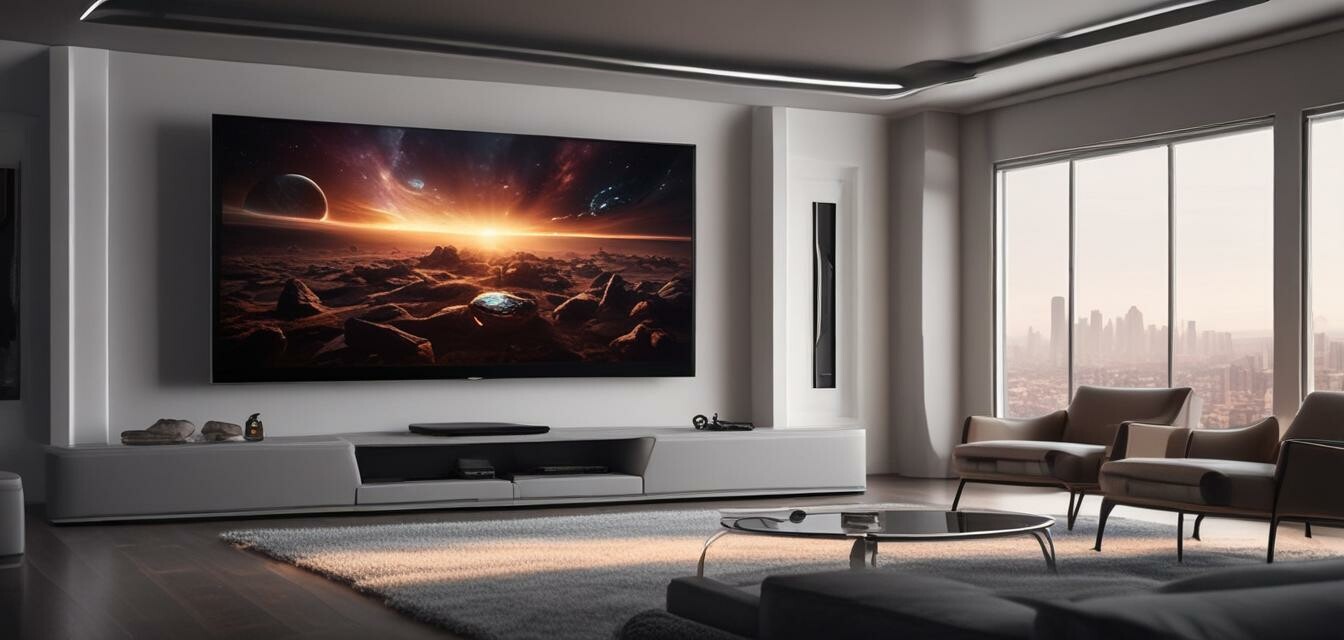
The growth of virtual home theater experiences
- Virtual reality (VR) and augmented reality (AR) are reshaping home entertainment.
- Integration of VR and AR in home theaters enhances immersion.
- New technologies, such as 3D audio and customizable viewing environments, have emerged.
- Industry trends show increasing consumer interest in virtual experiences.
- Future developments may revolutionize the setup and usability of home theaters.
The world of home entertainment is experiencing a significant evolution, particularly with the integration of virtual reality (VR) and augmented reality (AR) technologies. These innovations are transforming how families and individuals enjoy movies, gaming, and other forms of entertainment right from the comfort of their homes. As we navigate this exciting technological landscape, it’s essential to explore how these advancements are shaping our viewing experiences and what they mean for the future of home theaters.
The rise of virtual and augmented reality
Virtual reality and augmented reality have transcended gaming and are now making their way into everyday home entertainment. With VR headsets and AR applications becoming more accessible, they are offering immersive experiences that we couldn't have imagined a few years ago.
What is the difference between VR and AR?
| Feature | Virtual Reality (VR) | Augmented Reality (AR) |
|---|---|---|
| Definition | Fully immersive digital environment. | Overlaying digital information on the real world. |
| Devices | VR headsets (e.g., Oculus, HTC Vive) | AR glasses, smartphones, tablets. |
| User interaction | Complete immersion; the user cannot see the real world. | User can see the real world while interacting with digital elements. |
| Use cases | Gaming, training simulations, virtual travel. | Gaming, educational tools, enhanced media experiences. |
How VR and AR are transforming home entertainment
As consumers seek richer experiences, companies are developing ways to incorporate VR and AR into home theaters. Here are a few key advancements:
- Immersive viewing experiences: VR allows users to step into a virtual theater environment, choosing their seat and interacting with the show.
- Interactive gaming: AR enhances gaming by overlaying digital images onto physical settings, creating a blend of real and virtual worlds.
- Social viewing: VR platforms allow families and friends to enjoy movies together in a shared virtual space, regardless of their physical locations.
- Customized environments: Users can modify their virtual theaters, setting the mood and ambiance to their personal preference.
Key technology trends in home theater
The rapid development in technology is no longer limited to just VR and AR:
| Trend | Description | Impact on users |
|---|---|---|
| 3D audio | Spatial sound technology that makes audio feel immersive and enveloping. | Enhances realism and excitement during watching and gaming. |
| Smart home integration | Connecting devices and linking them with home automation systems. | Easy control of home theater setups through smartphones and voice assistants. |
| Streaming services expansion | New platforms offering exclusive VR content and experiences. | Access to a wider variety of entertainment options. |
| Affordable VR headsets | Decreasing prices of consumer VR devices leading to wider adoption. | More people can experience the benefits of VR without a significant investment. |
Consumer interest and market growth
The consumer demand for virtual experiences has soared, with market research indicating a promising outlook for VR and AR in the home theater segment. According to recent reports, the market for these technologies is expected to grow exponentially in the upcoming years.
What are consumers looking for?
- Enhanced immersion in films and gaming.
- The ability to customize viewing experiences.
- Social experiences that allow for interactive viewing with friends.
- Affordability and accessibility of new technologies.
Future developments on the horizon
As technology progresses, we can anticipate more innovative features to emerge in home theater systems. Some potential future developments may include:
- Advanced haptic feedback: Providing tactile sensations that further immerse users in their experiences.
- Integration with AI: AI-driven recommendations for content based on user preferences.
- Cross-platform experiences: Streamlining interactions between VR and traditional media.
Industry forecasts
With emerging technologies and shifting consumer behavior, the home theater landscape continues to evolve. Analysts predict that the integration of VR and AR will become standard in high-end setups, creating unique and rich entertainment experiences.
Pros
- Enhanced immersion with virtual experiences.
- More interactive and engaging gaming options.
- Flexible customization for personal preferences.
Cons
- Can be expensive to set up initially.
- May require additional accessories and space.
- Some consumers may experience discomfort in prolonged use.
Conclusion
The growth of virtual home theater experiences signifies a new era in how we interact with movies and games. With VR and AR technologies leading the charge, there are exciting times ahead for home entertainment enthusiasts. The prospect of customized viewing experiences, alongside social interactions through virtual spaces, enhances the appeal of high-end home theaters. As the technology evolves, we can look forward to a future filled with endless possibilities.
Explore more tips and insights
If you're keen on setting up your dream home theater, explore our sections on Home theater receivers, Speakers & sound systems, and stay updated with news and trends in the audio-visual space. Our resources are designed to help you navigate the world of high-end home theater setups effortlessly.

